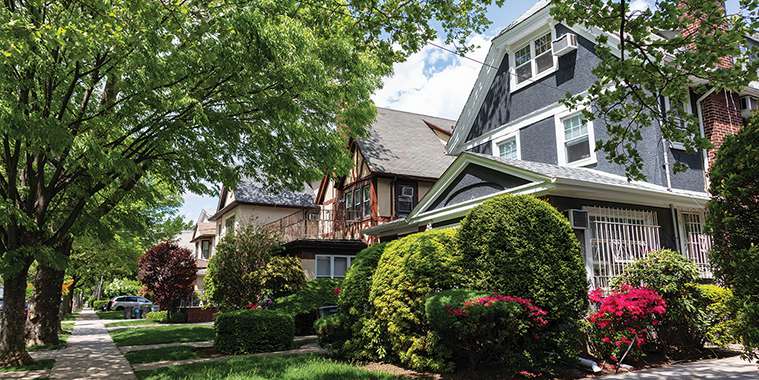With some of the oldest housing stock in Canada, it’s easy to purchase an older character home in Winnipeg. In fact, many homebuyers will only seek out old houses to buy for their incredible charm and the sense of originality not typically found in new builds or cookie-cutter tract home neighbourhoods.
“There’s a reason some say ‘they don’t make them like that anymore,’” says Vickey Barron, a broker at Compass in New York. “The quality of materials, design, and planning that went into many old homes would be extremely costly in 2023.”
But every homebuyer looking to purchase an old home should consider the possibility that they’ll have to spend money on repairs at some point in the future. Best-case scenario? The previous owners overhauled the home’s major systems and you won’t have to shoulder any costly improvement projects. Worst-case scenario? You have to spend big bucks bringing things like plumbing and HVAC up to date.
In the design and real estate world, the term “old home” typically refers to properties that were built 50-plus years ago, although many sought-after houses in the U.S. are 100 years or older. If you’ve ever dreamed of owning a home like this, here are a few things to consider.
Pros and cons of an old home
Apart from their obvious character and charm, old homes are coveted by buyers because they typically exist in established neighbourhoods.
“Older homes are typically built with higher-quality materials such as hardwood or old-growth wood framing, which are less susceptible to decay. Older homes are truly built to last,” says Brian Kleinschmidt, home improvement expert and host of 100 Day Dream Home.
But homes with 50 years of wear or more come with some disadvantages, too.
Jeff Palla, president of Mr. Handyman, owns a home that was built in 1904 and knows firsthand that historic homes come with a lot of repairs and expenses. He says the complexity of the job is often unknown until you understand which generation of materials you are updating. And until you can do an in-depth investigation behind the walls and under the floors, you won’t know what you’re working with.
“The home’s infrastructure, climate control system, ductwork and appliances may be in need of repair or, more likely, replacement,” says Greg Fasullo, CEO of Elevation, a residential energy solutions provider.
If your home is located in a historic district or has a historical designation, any improvements you make will likely be closely reviewed to make sure you maintain architectural integrity.
Common Repairs
With an older home, there are certain repairs that you’ll have to make that will be obvious, even without tearing down walls or pulling up floors. These repairs will likely include the following:
• New windows For energy efficiency, Palla says the windows in most older homes generally need to be updated from single-pane glass to more energy-efficient glass.
Fasullo says window replacements cost on average around $550 to $1,100 per triple-pane casement-style window, but the price can vary based on material, glass type, style, and labour costs. He says it typically takes between 40 minutes to an hour to replace one window.
• Full HVAC replacement “Vintage homes may not have a whole-house air-conditioning system,” says Kleinschmidt. Especially if they have radiators with hot water heating, meaning there is no duct-work throughout the house. He recommends working with a certified HVAC dealer to discuss options for updating heating and cooling systems.
A full HVAC unit replacement can cost, on average, between $3,300 and $16,000. This depends on the cost of labour in your area, the type and size of the HVAC unit, and whether you need new parts.
Fasullo says a full system repair can take anywhere from three to five days.
• Update plumbing Old houses are notorious for having outdated plumbing.
“The plumbing of an older home may be composed of various generations of pipes based on repairs performed through the history of the home,” says Palla.
To truly bring your house’s pipes up to date and make sure you don’t suffer any plumbing mishaps in the future, owners should expect to pay anywhere from $1,500 to $15,000 (or more) depending on the scope of the project and the cost of labour.
• Replace appliances An old stove can add to the rustic charm of an old house, but if it doesn’t work it’s little more than a piece of junk. If the appliances in your old home are nonfunctional or on their last leg (most newer kitchen appliances last 10 to 15 years), it’s time to replace them.
When buying new appliances, only look for those with Energy Star labels to ensure that they are truly energy-efficient. New free-standing ranges start around $750 and can cost up to five figures for luxury brands like Viking or Wolf.
• Electrical repairs Many old homes might have outdated or faulty wiring, which can be a safety concern. A good home inspector will be able to identify old wiring (like knob-and-tube or aluminum) that needs to be replaced.
Other electrical problems that owners of old homes are bound to see are outlets that no longer work, flickering lights, and improper grounding. Your home might also be running on an archaic electrical grid that can’t supply enough power to your modern appliances.
The cost to rewire an entire house spans from $10,000 to $30,000 depending on the size of your home and labour. Smaller projects, like replacing your electrical panel, will cost anywhere from $1,200 to $4,000 depending on the number of amps.
Older homes offer charm and details that newer homes don’t. If you choose to buy an older home, being prepared for these potential costs will ensure your homeownership dream is a good one. Remember, an experienced REALTOR® will be able to help you make the right decision and pinpoint the specific work that needs to be done.
— Realtor.com



